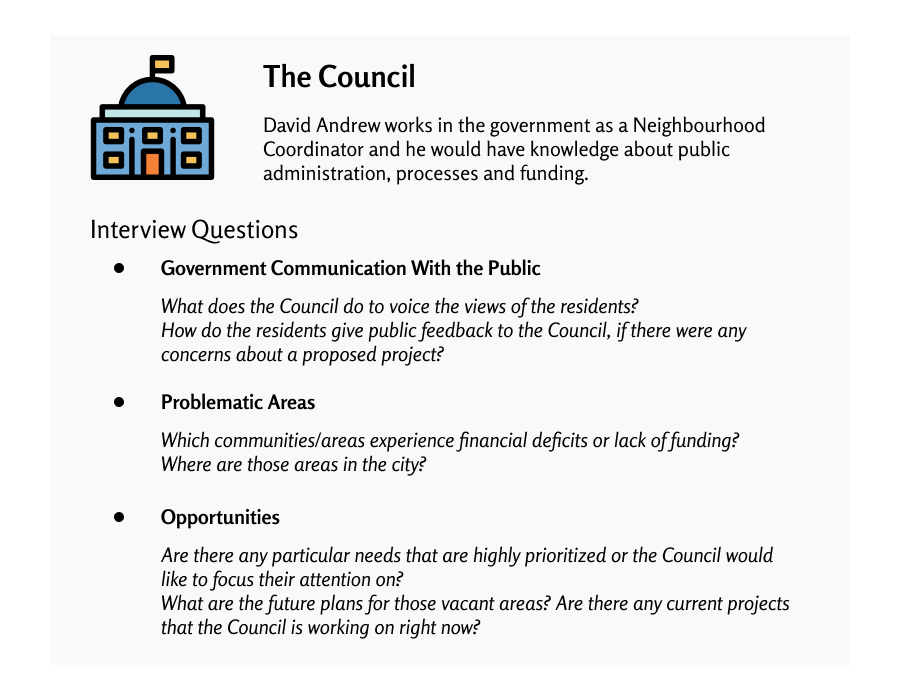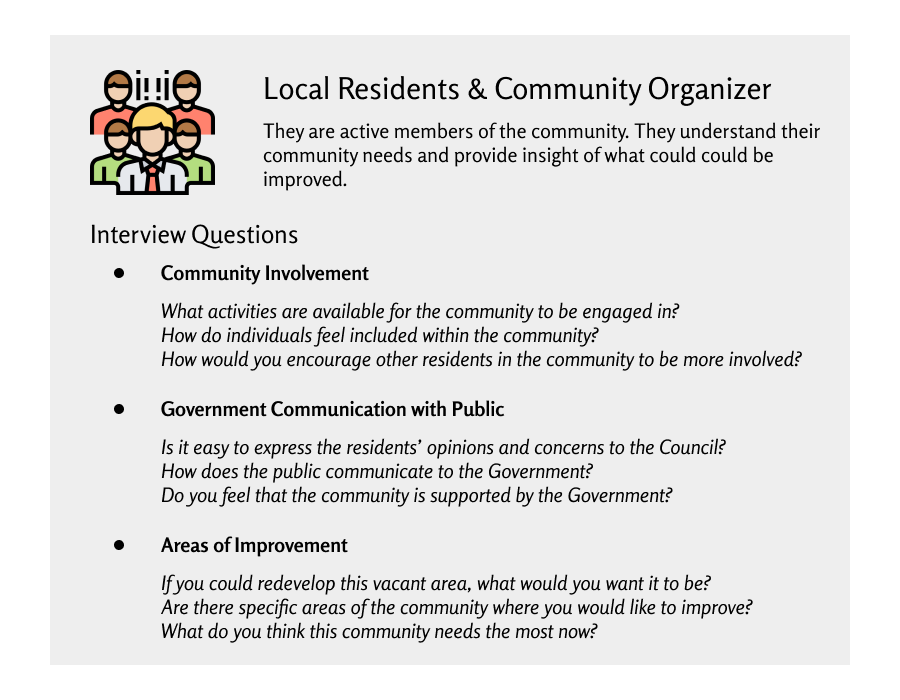My group asked Jayne Hopkins to arrange prototype demonstrations with 3 participants from Best of Bensham. We wanted to ask the people from the Best of Bensham, as they mostly represent the residents of Bensham. The participants live in Newcastle and they have worked in the Bensham at least for several years. Even though they may not live in Bensham, they interacted with the Bensham residents and they would understand their needs. My group could have asked our friends to complete the prototype demonstrations, however, we concluded that our friend groups do not have background knowledge and understanding for the Bensham community.
Participant Profile Questions
Before we began with the demonstration, we asked them a couple of personal questions and they are in the following points:
How many years have you stayed in Bensham?
- Participant 1: She doesn’t live in Bensham but she worked in Bensham for about 25 years.
- Participant 2: She doesn’t live in Bensham but she has worked in the community for 12 years.
- Participant 3: He doesn’t live in Bensham and he has worked in Bensham for nearly 3 years.
What is your occupation in Bensham?
- Participant 1: She works with a small charity and also as a project coordinator.
- Participant 2: Project Support Officer
- Participant 3: Community Development Worker
What is your experience like in solving local matter in Bensham?
- Participant 1: She finds that it is difficult for people to talk about the issues.
- Participant 2: She mostly works with low-income families and the community issue with food poverty.
- Participant 3: It is hard to engage a diversity of people from different backgrounds and education.
What are some of your hobbies?
- Participant 1: She keeps hens, likes to keep fit, walking outdoors and knitting.
- Participant 2: She enjoys reading, writing, walking outdoors, Pilates, swimming and cooking.
- Participant 3: He likes to hike, camp, cook, make beer and make music.
Tasks
There were several tasks that the participants were asked to complete during the interviews. The tasks are listed in the following points:
- You are new user to the application. Set up a profile with this application.
- You found a issue in the community and you would like to report this issue through the application.
- You would like to join a volunteering group that interests you.
- Make a volunteering group with this application.
All 3 participants were able to complete these tasks with ease. There were some difficulties in using the Figma website itself, but overall, all the participants enjoyed the process and commented positive opinions.
Evaluations
At the end of the prototype demonstration, we asked the participants to give their honest feedback on the application.
- On scale of 1-5 (1 being the least and 5 being the most), how easy was the application for you to use? All of the participants answered a 5.
- On scale of 1-5 (1 being the least and 5 being the most), would you use this application in the future? All the participants answered a 5.
- All of the participants would recommend this application to other people.
Strengths
- Simple, clear, user-friendly, and easy to navigate through the application
- Likes that the users can report community issues and they will receive automatic updates when the Council takes action
- Loves the voting feature, allowing the users to express their opinions
- Likes that the users can invite their friends to vote on an issue or join a volunteering group
- Thinks that this application is a better alternative than Facebook to make volunteering groups – more controlled
Opportunities and Future Obstacles
If our group had more time, we would ask other residents of Bensham to participate in this demonstration. These 3 participants were all from the same organization, so they may share similar perspectives and opinions about this application. By reaching out to the actual target audience, this would definitely enhance our feedback. One of the participants brought up a good point that this application would be really effective if there is a large number of users. However, the challenge is to convince the residents to accept this new change into the community. The initial process might result in a limited user base, so this might not be able to give the application its intended use. At the same time, there needs to collaboration with the Council to update the administration process online.
Lois




